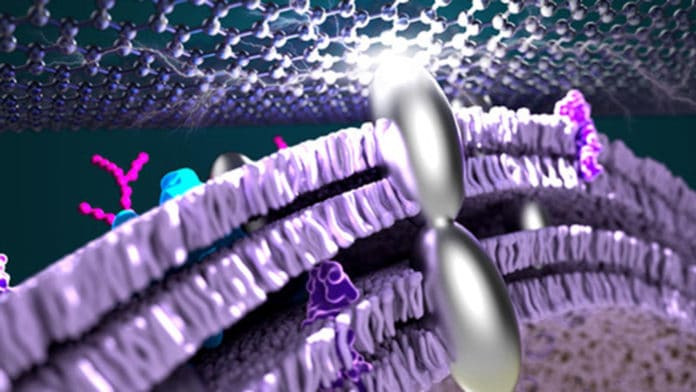Microbial fuel cell (MFC) is a promising technology for the generation of electricity from organic substances, but so far, they are plagued by inefficiency.
A UCLA-led team of engineers and chemists has taken a major step forward in the development of microbial fuel cells – a technology that utilizes natural bacteria to extract electrons from organic matter in wastewater to generate electrical currents. This environmentally-friendly process produces electricity without the combustion of fossil fuels while helping clean up wastewater.
For the new study, the UCLA team focused on the bacteria genus Shewanella, which can grow and thrive in all types of environments – including soil, wastewater, and seawater – regardless of oxygen levels. These species naturally break down organic waste matter into smaller molecules, with electrons being a byproduct of normal metabolic processes. When the bacteria grow as films on electrodes, some of the electrons can be captured, forming a microbial fuel cell that produces electricity.
However, microbial fuel cells powered by Shewanella oneidensis have previously not captured enough currents from the bacteria to make the technology practical for industrial use. Few electrons could move quickly enough to escape the bacteria’s membranes and enter the electrodes to provide sufficient electrical currents and power.
To tackle this problem, researchers added silver nanoparticles to electrodes composed of a type of graphene oxide. The nanoparticles release silver ions, which bacteria reduce to silver nanoparticles using electrons generated from their metabolic process and then incorporated into their cells. Once inside the bacteria, the silver particles act as microscopic transmission wires, capturing more electrons produced by the bacteria.
“Adding the silver nanoparticles into the bacteria is like creating a dedicated express lane for electrons, which enabled us to extract more electrons and at faster speeds,” said Xiangfeng Duan, corresponding author of the study.
With greatly improved electron transport efficiency, the resulting Shewanella-silver MFC outputs more than 80% of the metabolic electrons to an external circuit. It generates a power of 0.66 milliwatts per square centimeter, which researchers claim is more than double the previous best for microbial-based fuel cells.
With the increased current and improved efficiencies, the study showed that fuel cells powered by silver-Shewanella hybrid bacteria might pave the way for sufficient power output in practical settings.
